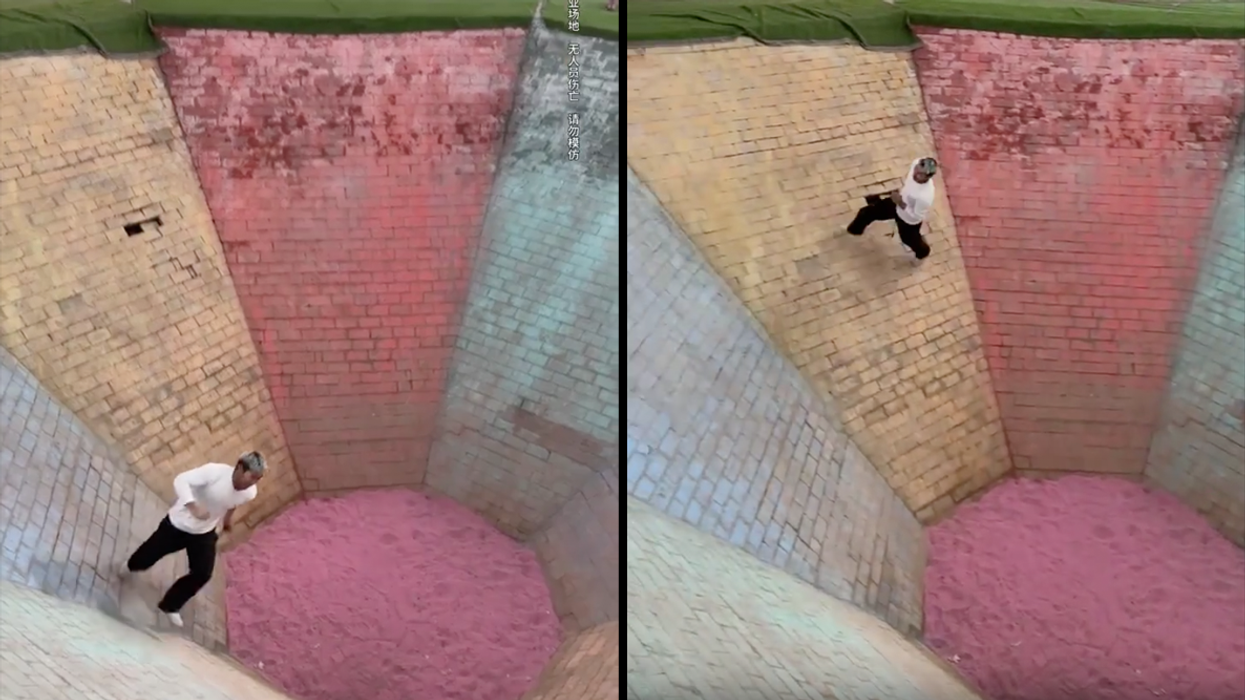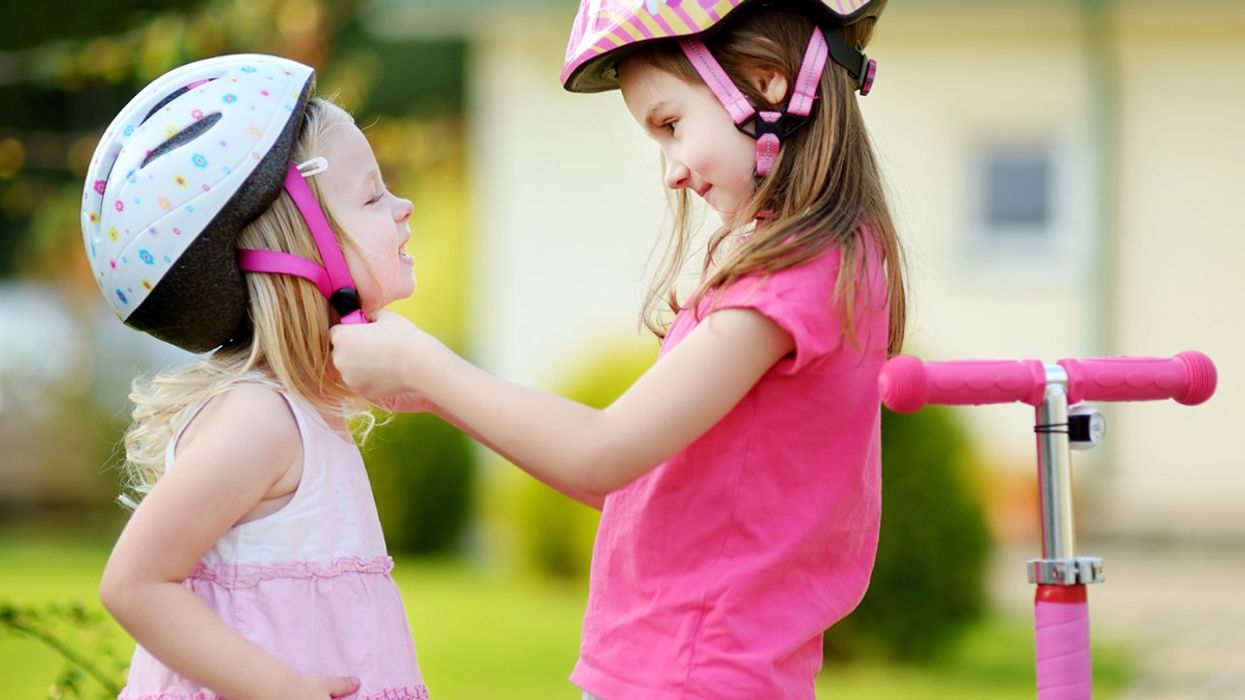A viral video from China has people questioning the laws of gravity—and then realizing it's all physics, skill, and a healthy dose of discipline. Posted on Xiaohongshu (also known as Rednote), the video shows a man inside a vividly colored pit, its vertical walls towering about 20 feet above him. There's seemingly no way out—until he starts running.
Don't try this at home.roar-assets-auto.rbl.ms
What happens next is astonishing. Within seconds, the man sprints in a perfect circle, using the momentum to climb higher and higher—until he’s out. It takes him less than ten seconds. The feat has stunned viewers around the world and inspired a deeper look into how such a thing is even possible.
Turns out, it wasn’t just a one-time adrenaline trick. It was a carefully executed combination of ancient martial arts, modern physics, and athletic excellence.
"Without some basics, you can't make it."
Meet Zhang Yije, a Beijing-based parkour athlete and sports blogger with 3.4 million followers on Rednote. He's not new to extreme challenges—he holds two Guinness World Records: one for the farthest distance cat leap to cat grab between walls, and another for the highest two-foot landing on a jogging pole using swinging inertia.
Obviously, Yije and death-defying stunts go way back.
@guinnessworldrecords Farthest distance cat leap to cat grab (wall to wall) 🐈 3.30 m (10 ft 9.9 in) by Zhang Yijie 🇨🇳 ✨ #GWRday #parkour #guinnessworldrecords
In his post, shared on February 16, 2025, Yije included a brief intro before the stunt.
“The Bagua pit will subdue every stubborn person,” he begins. “It seems that you can't climb up this straight wall. So, we use rotational force like this.”
As he circles the inside of the structure, he calls out: “Coming up, don’t stop.” Then, after he climbs out and catches his breath, he laughs: “People with weak hearts are not allowed to watch this. So far, no woman has managed to come up.”
"People with weak hearts are not allowed to watch this. So far, no woman has managed to come up."
— Zhang Yije
So, what happened?
To understand what just happened, we have to go back—way back—to the teachings of Bagua, a Taoist system rooted in trigrams and energy flow. Bagua isn’t just spiritual; it forms the foundation of Baguazhang, or “Eight Trigram Palm,” a martial art that prioritizes fluid circular movement, footwork, and body awareness.

Practicing Baguazhang often involves a training method called circle walking, where students walk in perfect circular paths with intentional posture and breath control. Over time, it trains both the body and mind for balance, responsiveness, and presence.
When Yije ran inside the pit, he wasn’t just using physics—he was channeling a flow state deeply embedded in Baguazhang philosophy. The continuous movement in a circular path not only maintained momentum but synchronized his energy and awareness, allowing for fine-tuned adjustments.
The physics is where it gets even cooler
This pit isn’t unlike the “Wall of Death,” a stunt usually performed by motorcyclists who ride along vertical walls inside cylindrical structures. That same principle applies here: if you're moving fast enough in a circle, a force called centripetal force pulls you inward, which, in this case, means the runner presses against the wall with enough pressure to create friction.
Here’s a quick breakdown:
- Centripetal force (F₍c₎ = m · v² / r): As Yije sped around the pit, the inward pull of this force kept him hugging the curve of the wall instead of falling.
- Friction: As his momentum pushed him against the wall, friction kept him from slipping. That frictional force had to be strong enough to counter gravity, and it only works if he's moving fast and the wall has the right incline.
- Wall design and speed: The pit’s precise slope and Yije’s pace worked together to let him ascend. If either had been off, the attempt would’ve failed.
"Without some basics, you can't make it."
— Zhang Yije
His background in martial arts made a big difference too. Those small shifts in posture and footwork? That’s classic Baguazhang training. Aligning the body with movement, adjusting for friction, controlling breath—every aspect played a role.
This stunt might look like a viral flex—and yeah, it is—but it also shows how centuries-old wisdom can intersect with physics in some seriously fascinating ways.
"The Bagua pit will subdue every stubborn person."
— Zhang Yije
The mix of tradition, athleticism, and science in Yije’s performance reminds us that the human body—when trained intentionally—can do things that look impossible. And while most of us won't be running up 20-foot walls anytime soon, it’s hard not to be inspired by what’s possible when movement meets mindfulness.


























 Image Source: Joshua Potash | Reddit
Image Source: Joshua Potash | Reddit 





